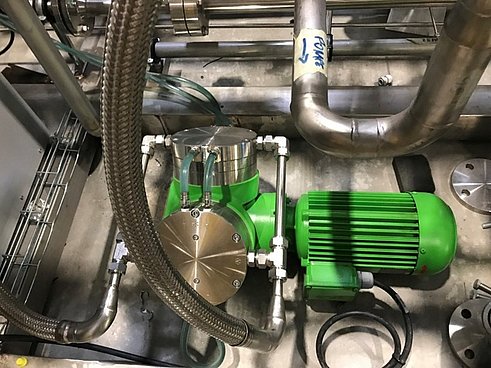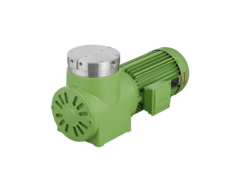KNF diaphragm gas pumps transfer or compress gases and vapors and generate vacuum without contaminating t...
Ultra-Clean Gas Mixtures for CERN’s LHC Experiments
Why a world-leading nuclear research center relies on KNF diaphragm pumps
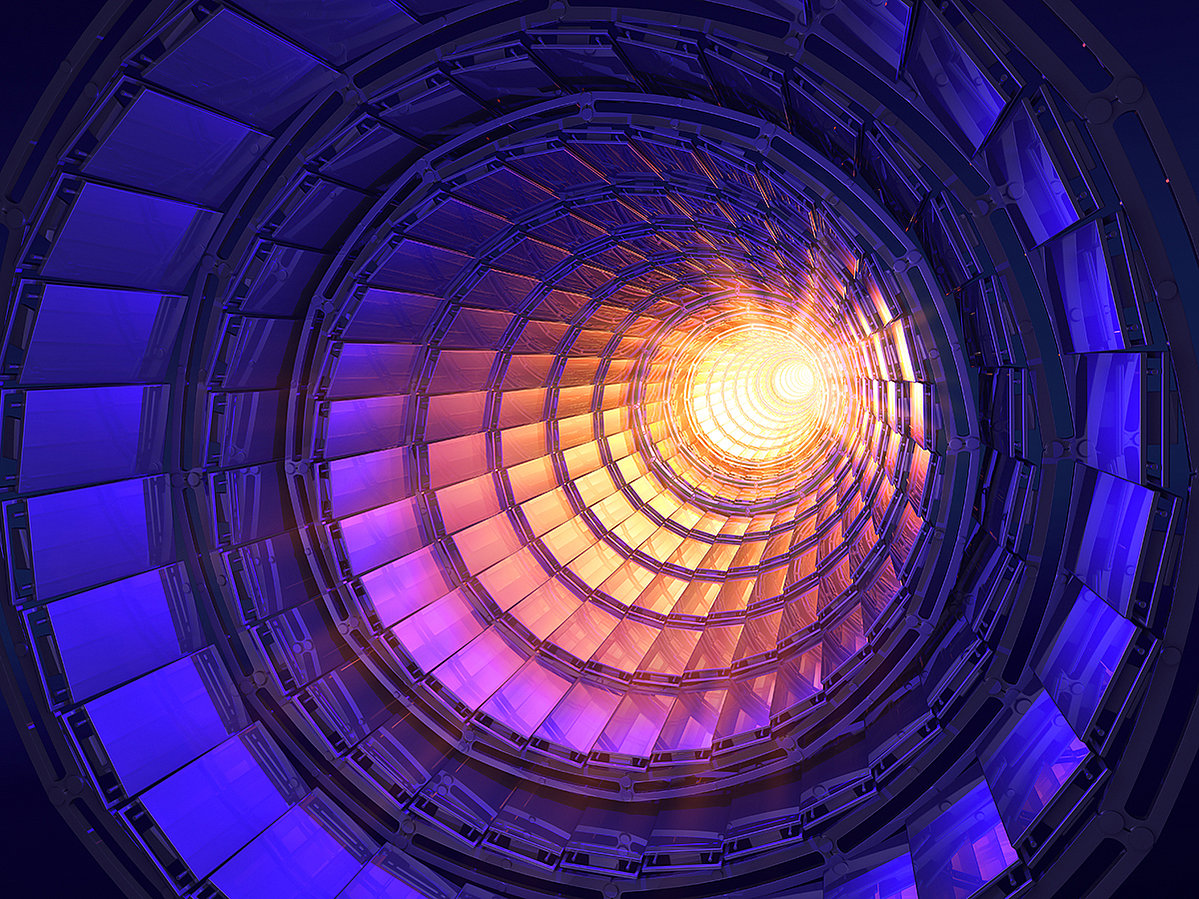
For millennia humankind has been fascinated by the universe. Some of the most spectacular discoveries on the composition of the universe have come from particle detectors at CERN. The pumps that circulate specific gas mixtures through these particle detectors must be highly reliable and safeguard the gases from contamination. For decades, CERN has relied on KNF diaphragm pumps to meet these strict requirements.
CERN – Researching the Nature of the Universe
What is the universe made of? This is the question CERN is attempting to answer. The world-leading research facility does this by probing the fundamental structure of the particles that make up everything around us.
Buried deep underground, partly in Switzerland, partly in France, various circular and linear particle accelerators are used for experiments that have already brought several groundbreaking achievements, such as the discovery of the Higgs boson and the isolation of antimatter in the form of antihydrogen.
LHC – Gaining Deeper Insights Into Matter
In order to cancel out environmental impacts such as radiation, the largest particle accelerator at CERN, the Large Hadron Collider (LHC), is located 100 meters (328 feet) underground. Its impressive tunnel is 3.8 meters (12.5 feet) wide and nearly 27 kilometers (16.8 miles) long. Here, particles are accelerated to just under the speed of light and collided with one another. A series of detectors then records the phenomena occurring during these collisions.
When charged high-energy particles crash past noble-gas molecules, they leave a trail of ionization in their wake. These tiny signals can be amplified using electric fields and then measured electronically to reveal particle tracks with a high level of precision. From the results of these experiments, CERN scientists gain deeper insights into the structure of matter.
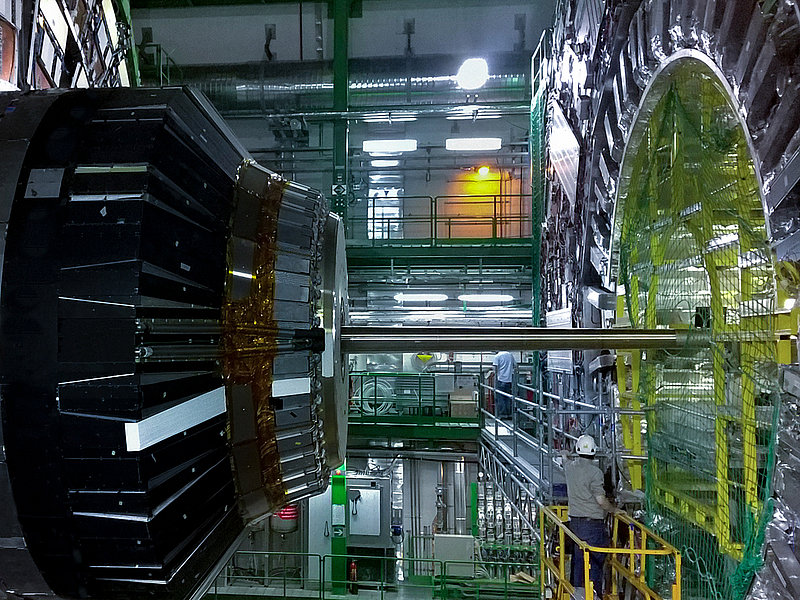
Many Gases Involved in CERN
CERN uses about 30 gas systems to deliver the right gas mixture to the corresponding detectors at the Large Hadron Collider experiments. The detector gas mixture is a sensitive medium. In it, a charge multiplication produces a signal that is then recorded and analyzed.
A correct and stable gas mixture composition is key to the reliable operation of the LHC experiments. Gas mixtures for these particle detectors are composed of noble gases such as argon, xenon, helium, and other gases like tetrafluoromethane, tetrafluoroethane, sulfur hexafluoride, isobutane, and carbonic dioxide.
Furthering Higgs Boson Research
The four main particle detectors at CERN are known as A Large Ion Collider Experiment (ALICE), ATLAS, Compact Muon Solenoid (CMS), and Large Hadron Collider beauty (LHCb). The CMS detector, where KNF diaphragm pumps are used to purify and circulate the specific gas mixtures, is 21 meters (68.9 feet) long, 15 meters (49.2 feet) wide, 15 meters (49.2 feet) high, and weighs 14,000 metric tons. Constructed in 15 sections, it is located in a hall 100 meters (328 feet) underground near Cessy, France. The CMS experiments are primarily aimed at advancing research into the Higgs boson, which was detected at CERN in July 2012.
Gas Recirculation and Recuperation
Environmentally harmful chlorofluorocarbons known as freons, also play an essential role in detector gas mixtures. They allow to achieve the detector performance needed at the LHC experiments (high-rate capability, containment of charge multiplication, detector stability at long term, etc.). To deal with this issue, physicists at the LHC are conducting research into eco-gases for the next generation of detectors.
CERN’s EP-DT Gas Team is developing gas recuperation systems for the large experiment in addition to the already used gas recirculation systems. They are also developing a compact and flexible gas recirculation system for laboratory applications to eliminate any gaseous emissions from the detector activities. Recirculating and recuperating the gas mixtures also reduces CERN’s operating costs.
Why KNF Diaphragm Pumps?
After deploying KNF diaphragm pumps for decades, CERN knew how reliably they perform and highly valued the flexibility of KNF in implementing projects and delivering customized solutions. Two KNF pumps were chosen to purify and circulate the gas mixtures in the CMS particle detector.
A third pump serves as a backup in case of any failure during an experiment. Since detector gas mixtures must be free of contamination and have unimpaired circulation, KNF process pumps have proven to be the ideal solution due to their cleanliness, gas-tightness, and reliability.
Specially Customized Pumps for CERN
The pumps in current use at CERN are the result of close collaboration and high level of customization. Based on a KNF N 0150, the pumps are equipped with the pump head geometry of a KNF N 1200.
They were further customized by combining a working diaphragm with an additional safety diaphragm, which prevents gas from escaping in the unlikely event of a fracture. Despite the high level of customization, this process only took 18 months of development, including rigorous factory testing.
“Particle detectors are extremely sensitive to the presence of impurities in concentrations even below the ppm level. KNF pumps were tested, and they ensure this requirement is met.”
Roberto Guido, Project Leader, EP-DT Gas Team
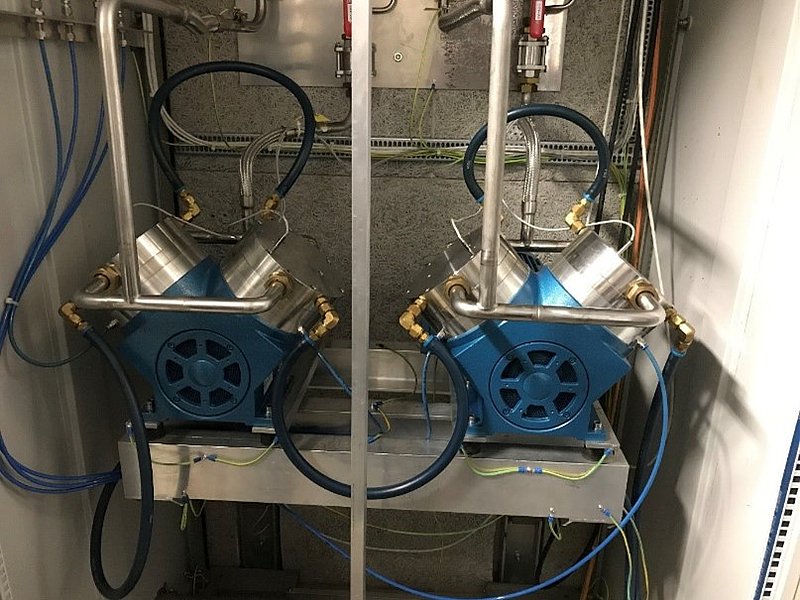
Get in Touch To Get Your Customized Pump Solution!
Decades of expertise gained in successful collaboration with world leaders in a broad range of areas enable KNF to understand and deliver the products required for cutting-edge applications. Our KNF experts will be glad to answer any questions you have about your specific application and explain how you can benefit from KNF solutions.

